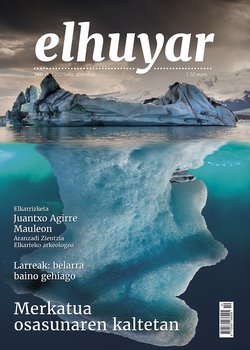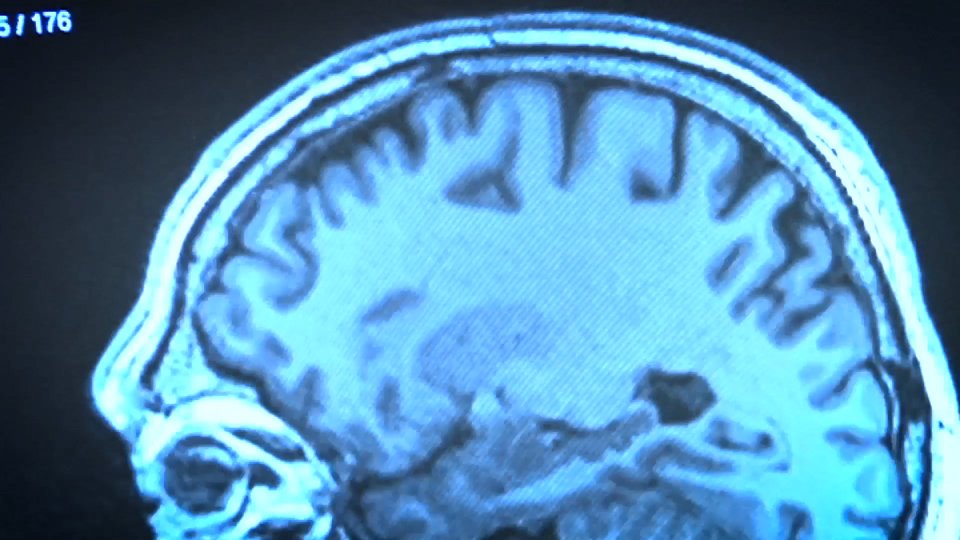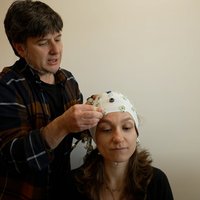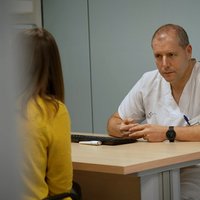José María Rivera: "diagnostic cytology is a routine technique to detect many cases of cancer"
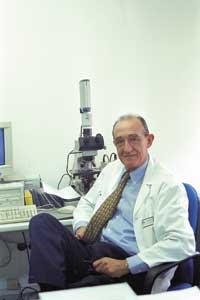
XIV International held on 31 May in Amsterdam At the Congress of Cytology has received an important international award Maurice Goldblatt. Before going to pick up the prize we were with him and taking advantage of the warm welcome he made in the office of Cruces, we had a long and interesting talk.
Congratulations for the Maurice Goldblatt Cytology Prize! Have you been given compensation for a specific job or for the entire journey?
I think they have rewarded me for the work done during all these years. The prizes of the last three years (1999, 2000 and 2001) will be presented at the Amsterdam Congress, and what I am talking about is the last. It has been curious that every year we can express our opinion because we communicate to the partners the names proposed to receive the award, but this year I have not received the list of nominees. Apparently, they wanted to surprise me and now I have to prepare the conference I have to give.
Therefore, in addition to giving you the prize, they have made you work. In any case, I don't think you're in a precarious working situation. What do you do now?
I have always worked in the field of cytology, not in the basic cytology of research, but in clinical cytology, especially the diagnosis, that is, in the cytology with which we carry out the diagnoses.
In fact, cytology is a very simple way to diagnose and the one that produces the least damage to the patient, since it does not require surgical intervention. Biopsies require a cut, but simply insert the syringe into the tissue to be analyzed with cytology and remove the sample. Analyzing these cells we can know the correct diagnosis.
It is a routine diagnostic technique for many cancer cases. For example, although in the Basque Country other types of cancer are more common, cervical cancer caused many deaths in the year. Now, on the contrary, the Pap test is common and allows very premature diagnoses, so mortality has decreased dramatically.
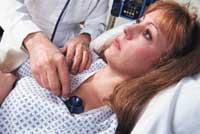
This example therefore demonstrates the importance of diagnostic cytology, in this case in the early diagnosis of cancer. But he has also worked in many other areas, right?
Yes, yes... In his day I studied muscle fiber altered by the trikina and, around 1967-68, published a work on it. This work was one of the first performed by electron microscopy and has been cited on numerous occasions.
Then I worked on experimental neuromuscular pathology. In fact, I did the thesis about the regeneration of the motor nerve plate. I made the histological explanation of acetylcholinesterase, the neurotransmitter of the motor plate. It was a very heavy job, but at the University of Santiago I won an extraordinary prize.
And now you also live on the shores of the Cantabrian Sea.
Yes, it is, but from there I was. I went from Santiago to Seville and from there, with a scholarship from the March Foundation, to Germany, to study a certain area of the central nervous system. It was also published in a prestigious scientific journal of the time. After returning to Santiago, I came here and, as I said, I have worked mostly on cytology to diagnose cancer. Before, however, together with doctor Sánchez Fernández, I published works on the inner structure of the ear.
What type of cancer have you paid the most attention to?
Chest pathology is what interests me most. Breast cancer is a very serious problem. The number of cases increases year after year and it should be noted that it is not the only type of cancer, but the types of breast cancer are several and each has its treatment and prognosis.

Have you seen many changes in women's attitude and prevention regarding cancer in so many years?
Of course! Today, governments have become aware of the seriousness of breast cancer and for years the Basque Government has launched a prevention campaign. However, even though we learn something new every day, we face other difficulties and challenges. There are no known direct causes of breast cancer, which makes everything difficult. We know that it is related to genetics and that its influence is important. But we cannot say it is for that gene or for it. Due to the diversity of causes that cause genetic changes, we can say that cancer types are a consequence of the unification of important genetic changes.
On the other hand, it is clear that in developed countries cancer cases are more numerous and not only because of their better diagnosis or their greater life expectancy. In addition, the lengthening of life expectancy, in addition to the infant, affects all types of cancer. In fact, except for childhood cancer, it is a widespread disease of over 60 years of age. However, it seems that in developed countries there is a greater chance of combining the genetic changes produced by cancer cells.
Since it is difficult to know the genetic agents that generate the cancer cell, to be able to recognize it as soon as the cancer occurs, it may be best to detect the time the cell moves. Is it possible?
No, currently the only diagnostic weapon for detecting cancer cells is cytology. With new imaging techniques such as ultrasound and radiology you can see smaller and smaller nodules, but to know if it is good or bad cytology is used. If necessary, in the future we will be able to detect in blood any indicator produced by malignant cells. But, on the one hand, the indicator should only be that produced by these cells and also it would not indicate where the tumor is. However, biochemical techniques are increasingly accurate, but the problem is complex.
Breast cancer is finding very small tumors that are directly related to size and prognosis. Early diagnosis and increasing knowledge of the type of tumor are performed. In addition, surgery is not as radical as before and lymph nodes are studied to detect expansion, so it can be seen faster if it is spreading or not.
We have recently heard that a diagnostic method based on the ganglion caregiver has begun to be used. What is it?
Lymph forests drain specific areas of the body and mammal vessels are collected in the armpit node. If a radioactive colouring or isotope indicator is injected into the tumor, you can see which node appears. Therefore, analyzing this ganglion we can know the situation of the chest. Although it seems simple, it is not a usual technique, since the study of this ganglion gives a lot of work. On the other hand, although it is useful in breast cancer, other types of cancer caregiver nodes are less accessible, such as colon cancer.

It is said that the methods of diagnosis have improved a lot and in relation to it, in most cases, the prognosis is better. Cures will also be getting better.
No doubt. Radiation therapy and chemotherapy are smoother and more accurate than before. Thus, in addition to achieving greater efficiency, the patient is more sensitive to treatments.
In addition, in some cases, as in some types of breast and prostate cancer, hormonal therapy may be used. For example, breast tissue is subjected to estrogen and the use of anti-estrogen substances can stop the growth of certain types of tumors.
In other cases of cancer, a bone marrow transplant is needed... It is not easy, there are many cases and everyone needs special treatment.
Finally, many advances in the fight against cancer are announced. Looking ahead, what are you doing?
We have moved from cytology to molecular study of tumors. Now, in collaboration with the Genetics Department of the University of Navarra, we are researching both molecular and genetic. From there go the current lines of research and we hope to advance in the search for better diagnostic methods.
Buletina
Bidali zure helbide elektronikoa eta jaso asteroko buletina zure sarrera-ontzian


